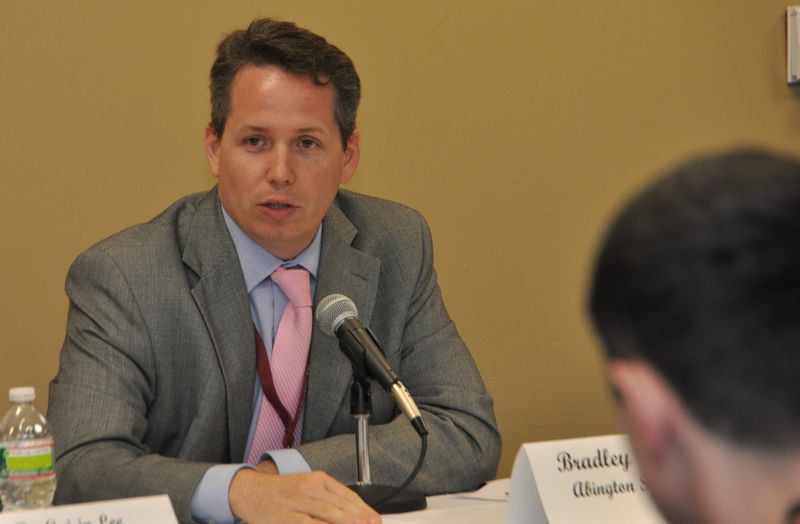Penn State Abington students and a group of professionals dissected career opportunities in the fields of science and science education during a Learn at Lunch panel discussion last week. Spurred by nagging worries about the economy, the most popular topic among those gathered in the campus’ Lubert Commons was how students can merge their talents with employment prospects.
Richard L. Jones, health care executive in residence at Penn State Abington, suggested four growth areas for students to explore: physician assistant, biomedical and robotic engineers, wellness and informatics opportunities. He said he had counted more than 60 different career paths at Abington Health system alone during his tenure there as chief executive officer.
“Start early to find out if one of these roles is a good fit. You must show persistence and a desire to perform,” Jones said.
Bradley Palmer, science department chair at Abington Senior High School, said that contrary to popular belief there are opportunities for science teachers at the entry level and beyond.
“My concern is that students think jobs are scarce in science education, but there are openings in school districts. Put yourself out there – network, observe teachers in action,” he said. “Work at a summer camp to make sure you really like kids.”
Stephanie Grande, a seventh-grade science teacher at Abington Junior High School, told students that the rewards of her job are priceless. “You give back every day and make a real difference in a child’s life. Teaching is all about relationships, and children need positive role models,” she said.
The 23-year teaching veteran reminded students that there is a lighter side to her work. “Every day hysterically funny things happen over and over, just like in the movie ‘Groundhog Day,’ ” Grande said.
Abington faculty members encouraged students to field test their aptitude for science by participating in ACURA, Abington College Undergraduate Research Activities.
“You work with a faculty mentor and receive academic credit to apply textbook knowledge to real world problems,” Gui-in Lee, a panelist and Abington associate professor of chemistry, told the group of about 50.
The ensuing discussion focused on the benefits of combining science with a minor in another field. Panelists and audience members mentioned examples such as how a major that merges science and business could lead to positions in the pharmaceutical and medical sales areas. Similarly, a multidisciplined approach that merges as science, art and English could lead to careers in scientific writing or illustration. Other options could be health care law, bioethics, bio-behavioral health and energy engineering, the latter of which is a new Penn State major.
The Learn at Lunch, organized by the campus’ Career Development Center, was the first to highlight opportunities in science and science education. Carol DeBunda, coordinator of the Career Development Center, said she was impressed by the breadth of the discussion.
“We want to educate students about the huge variety of opportunities in the sciences,” she said. She encouraged students to visit the Career Development Center for help in exploring their options.
Jones, Palmer, Grande and Lee were joined on the panel by Lori Rink, a lecturer in biology at Abington and a former postdoctoral associate at Fox Chase Cancer Center. Steven Bloomer and Les Murray, Penn State Abington assistant professors in biology, rounded out the group.
For more information on the Career Development Center, go to www.abington.psu.edu/careerdevelopment.
For more information about Abington’s science and education programs, go to http://www.abington.psu.edu/academics.
